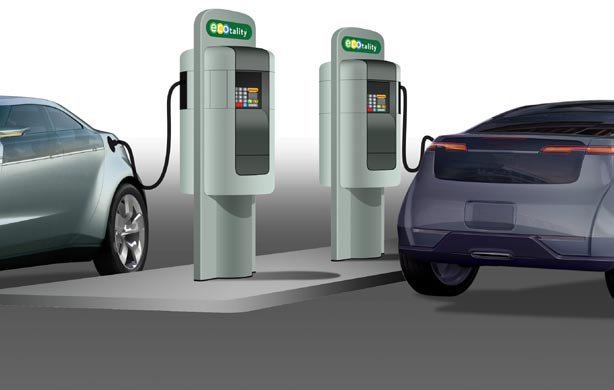Electric vehicles (EVs) have gained traction as a sustainable and eco-friendly mode of transportation. With advancements in technology and heightened awareness about reducing carbon emissions, EVs are increasingly popular worldwide.
One driving force behind the rise of EVs is their ability to significantly reduce greenhouse gas emissions. Unlike traditional vehicles, EVs run on electricity stored in batteries, eliminating tailpipe emissions that contribute to air pollution and climate change.
Government incentives like tax credits and charging infrastructure development have further encouraged consumers to embrace these environmentally friendly alternatives.
Furthermore, EV technology has improved with longer travel ranges and the proliferation of rapid charging stations, addressing concerns about range anxiety and providing convenience comparable to conventional refueling.
In addition to their environmental benefits, EVs offer financial advantages such as lower operating costs and reduced maintenance requirements compared to traditional vehicles.
Governments worldwide are implementing policies to accelerate the adoption of EVs through stricter emission standards for automakers and subsidies for purchasing EVs or installing home charging stations.
The rise of electric vehicles represents a significant shift in the automotive industry. As we prioritize sustainability and combat climate change, it is clear that EVs will play a crucial role in shaping the future of transportation.
Increasing Demand for EV Batteries
The rising popularity of electric vehicles (EVs) has created a growing demand for efficient and reliable battery systems. EV batteries are crucial components that store and deliver power to electric motors, enabling these vehicles to run efficiently.
As the world increasingly prioritizes sustainability and environmental awareness, the demand for EVs continues to surge. Factors such as advancements in battery technology, increased awareness of climate change, government incentives, and improvements in charging infrastructure are driving this growth.
To meet the increasing demand, automakers and battery manufacturers are investing in research and development to improve battery chemistry, design, and manufacturing processes. They aim to develop batteries that can store more energy while occupying less space within the vehicle’s structure.
Efficiency is key in reducing energy consumption and emissions.
Reliability is another critical aspect of EV batteries. Drivers rely on their EVs for daily commuting as well as long-distance travel. Therefore, it is crucial that the batteries provide consistent power delivery without significant degradation over time.
Battery management systems play a vital role in ensuring optimal charging and discharging cycles while safeguarding against overheating or overcharging.
Importance of Battery Recycling in the EV Industry
As the popularity of electric vehicles (EVs) grows, so does the need for proper battery recycling. Recycling EV batteries is crucial for a sustainable future in the EV industry. It allows valuable materials to be recovered and reused, reducing waste and minimizing environmental impact.
EV batteries contain expensive and environmentally harmful elements like lithium, cobalt, nickel, and manganese. Without recycling, these resources would go to waste and contribute to pollution. By recycling batteries, we can reduce the demand for new raw materials and lower greenhouse gas emissions associated with mining and manufacturing.
Proper disposal through recycling also prevents harm to human health and ecosystems. Batteries contain hazardous substances that can contaminate soil and water if not handled correctly. Through responsible recycling practices, we can mitigate these risks.
Battery recycling involves collection, sorting, disassembly, and extraction of valuable materials. The reclaimed materials can be used in manufacturing new batteries or repurposed for other industries, reducing reliance on raw material extraction.
Overview of EV Battery Technology
Lithium-ion batteries are the most common type used in electric vehicles due to their high energy density, long cycle life, and low self-discharge rate. These batteries have key components like an anode, cathode, electrolyte, and separator. They facilitate the flow of ions between electrodes during charge and discharge cycles.
Lithium-ion batteries offer high energy density, allowing electric vehicles to achieve longer driving ranges without compromising performance. They also have a long cycle life, enduring numerous charge and discharge cycles before significant degradation.
Additionally, these batteries have a low self-discharge rate, retaining their charge for extended periods even when not in use.
Ongoing research aims to further improve battery technology for electric vehicles by exploring alternative materials and innovative designs. Advancements in battery technology will play a crucial role in shaping the future of sustainable transportation as the demand for electric vehicles continues to rise.
Lifespan and degradation of EV batteries
Lithium-ion batteries used in electric vehicles can experience degradation over time. Factors like temperature extremes, charging habits, and operating conditions affect battery performance and lifespan. Gradually, as batteries age, their capacity diminishes until they are no longer suitable for use in electric vehicles.
Extreme temperatures, frequent fast charging, high humidity, and vibrations contribute to faster degradation. Manufacturers are continually improving technology to enhance durability and extend battery lifespan. Regular maintenance helps identify issues early on for optimal performance.
Understanding these factors is crucial for maximizing battery life in electric vehicles.
Risks Associated with Improper Disposal of EV Batteries
Improperly disposing of electric vehicle (EV) batteries poses serious risks to the environment and public health. These batteries contain toxic materials like lead, mercury, and cadmium that can contaminate soil and water sources if not handled correctly. This contamination can harm ecosystems, wildlife, and human health.
Lead can accumulate in the soil, affecting plants and animals, while mercury can enter water bodies and bioaccumulate in fish, leading to mercury poisoning in humans. Cadmium leaching into the soil can also pose health risks through the food chain.
Responsible battery recycling is crucial to mitigate these risks and protect our environment and well-being.
| Risk | Description |
|---|---|
| Soil Contamination | Improper disposal of EV batteries can lead to toxic materials leaching into the soil, posing risks to plant life and animals that come into contact with contaminated areas. |
| Water Contamination | Toxic substances from EV batteries can contaminate water sources, potentially affecting aquatic ecosystems and posing health risks to humans through the consumption of contaminated fish. |
| Lead Poisoning | Lead found in EV batteries is harmful if released into the environment, particularly for children who are more vulnerable to its neurotoxic effects. |
| Mercury Pollution | Improper disposal of EV batteries can result in mercury entering water bodies, bioaccumulating in fish and other organisms, which can lead to mercury poisoning in humans consuming contaminated seafood. |
| Cadmium Exposure | Cadmium present in EV batteries can leach into the soil, ultimately entering the food chain and posing health risks to humans who consume contaminated crops or animals. |
Responsible battery recycling practices are necessary to minimize these risks associated with improper disposal of EV batteries. By ensuring proper handling and disposal of these toxic materials, we can protect both our environment and public health.
Company A: Pioneering Innovation in Battery Recycling
Company A leads the way in battery recycling through innovative and sustainable practices. They collaborate with automakers and government agencies to develop efficient processes for collecting, dismantling, and recycling EV batteries.
One notable partnership involves working closely with XYZ Automaker to establish a comprehensive battery recycling program that ensures environmentally friendly disposal of end-of-life batteries.
By responsibly recycling EV batteries, Company A reduces waste and contributes to environmental preservation. They recover valuable materials like lithium, cobalt, and nickel, which can be reused in new battery production. These sustainable practices also create job opportunities within local communities.
Technological advancements are constantly improving battery recycling processes:
- Advanced Sorting Technologies: Accurate separation of different battery chemistries enables targeted recycling.
- High-Temperature Processing: Improved recovery rates of valuable materials from batteries, such as lithium, cobalt, and nickel.
- Electrochemical Techniques: Extracting valuable metals directly from battery components reduces manual dismantling.
- Automation and Robotics: Streamlining the dismantling process with precision, efficiency, and worker safety.
- Closed-Loop Systems: Using recycled materials directly in new battery production minimizes waste and reliance on virgin resources.
These technological advancements enhance sustainability and drive industry growth while optimizing battery recycling methods.
Company B: Revolutionizing Battery Recycling
Company B is revolutionizing battery recycling through their unique approach and leveraging technological advancements to improve efficiency and sustainability. Their breakthrough innovations have significant implications for both investors and the environment.
Through extensive research and development, Company B has developed cutting-edge technologies that enable the recovery of a higher percentage of valuable materials from spent batteries. These advancements not only increase resource efficiency but also reduce reliance on mining for raw materials.
Investing in companies like Company B provides an opportunity to support sustainable practices while potentially reaping long-term financial rewards. As demand for recycled battery materials grows, companies leading in this field are well-positioned to capitalize on market opportunities.
[lyte id=’JjTvk5MmQDs’]



